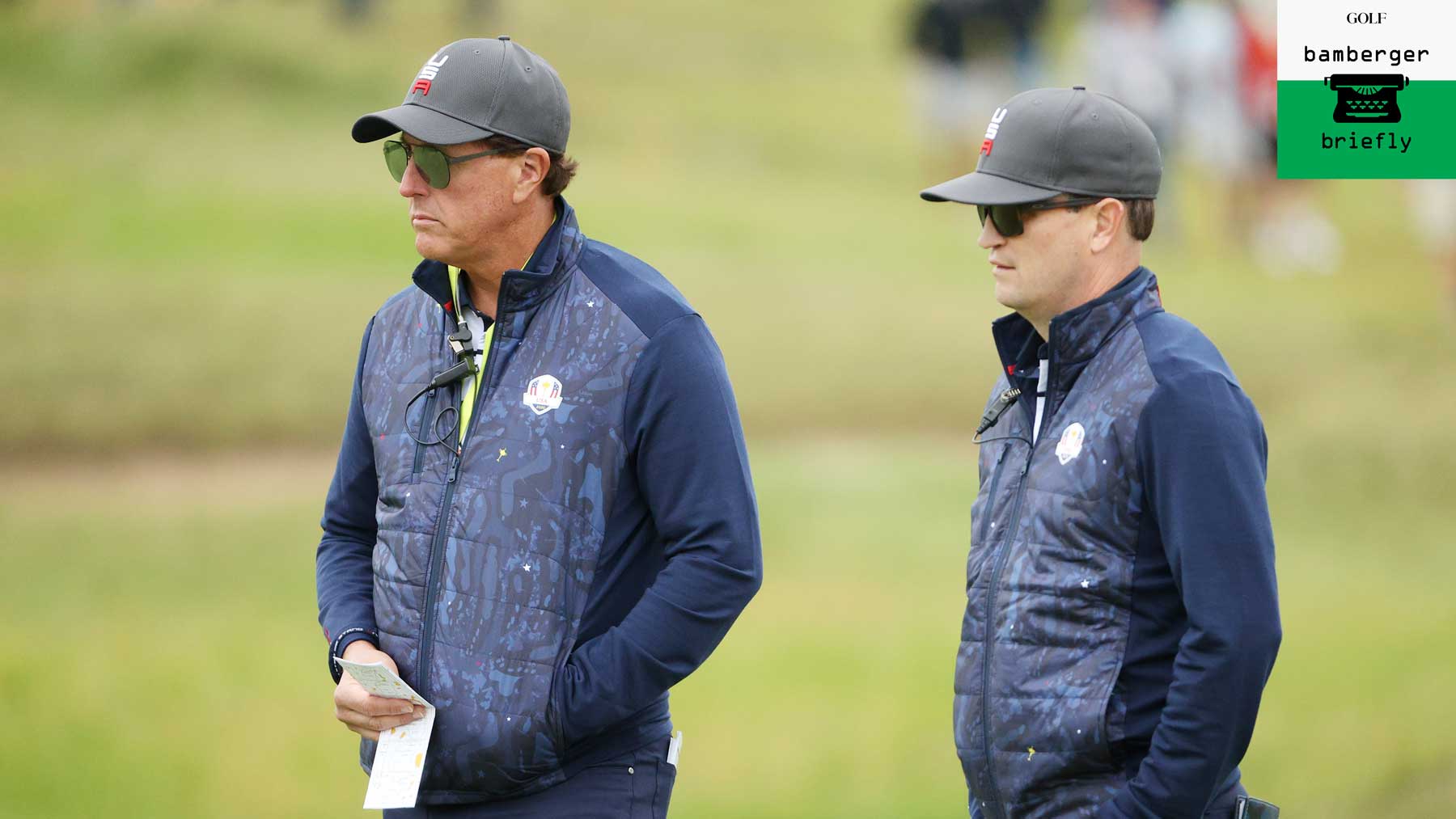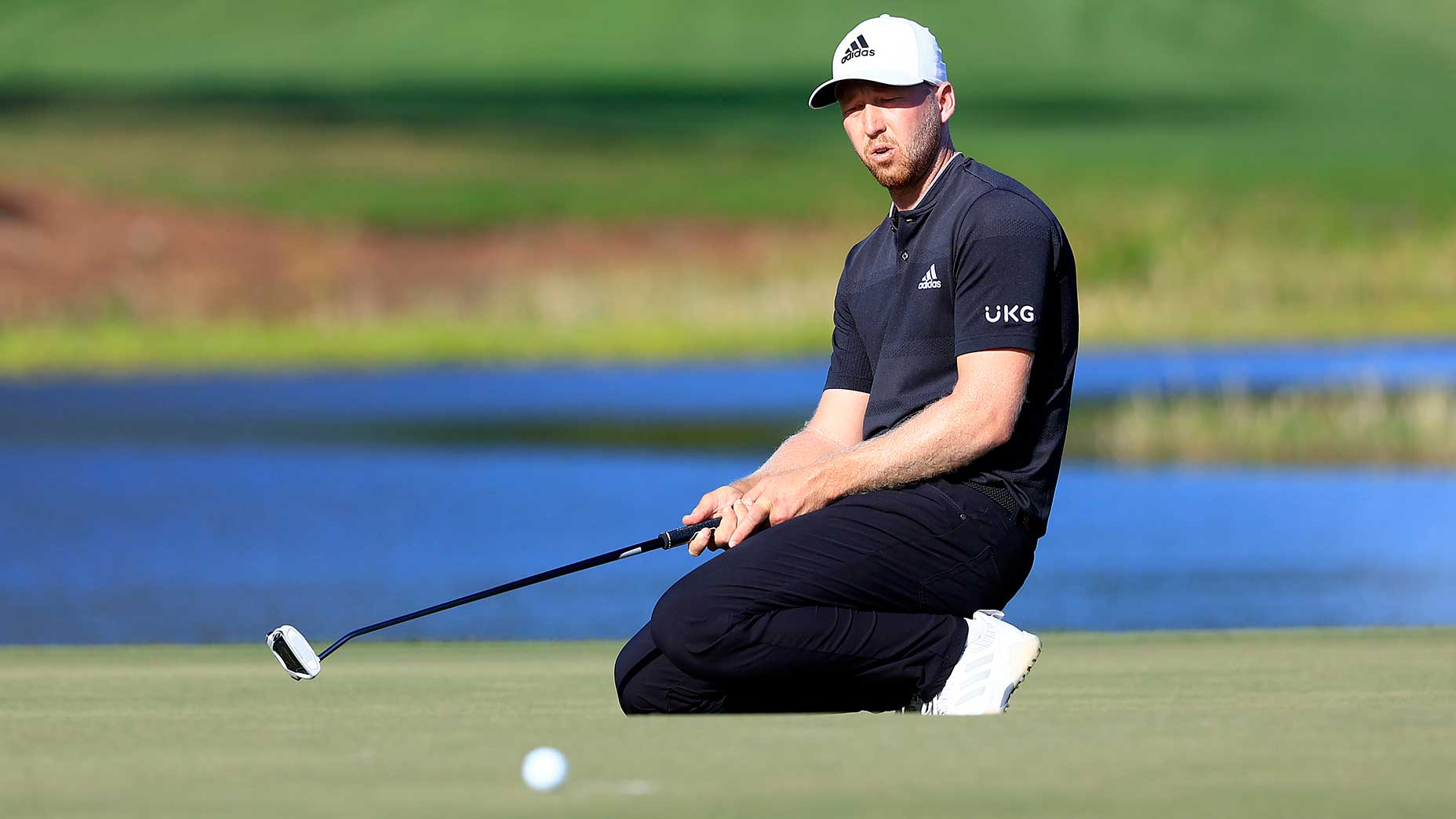PALM BEACH GARDENS, Fla. — It can’t be easy, playing the Bear Trap, in the wind, on a PGA Tour Sunday, when your golf is good and a single five-word question dominates your life:
Can I keep my card?
Brian Stuard, 39-year-old pro from Jackson, Mich., and the 272nd-ranked player in the world, is an expert in this subspecialty.
The late Dave Hill of Jackson, Mich., won 13 times on Tour.
His kid brother Mike Hill won three times.
Stuard has one Tour win, in 2016, in New Orleans.
On Saturday, a clip of Stuard playing his second shot on PGA National’s par-4 9th hole made the rounds on social media. The video begins with Stuard at address, repeatedly gripping and re-gripping his club. Another 29 seconds elapse before Stuard begins his takeaway. It’s difficult to watch but that hasn’t stopped golf fans from doing so. As of this writing, the video (below) has been viewed more than 800,000 times.
Pro’s, they are as mental as the rest of us!! @ForePlayPod @RiggsBarstool @jjkilleentcu pic.twitter.com/22hYr46axo
— Andrew Smith (@drews226) February 26, 2022
On Sunday, in the fourth round of the Honda Classic, Stuard was looking to post his first top-10 finish since the Shriners tournament in the fall of 2019.
He played the difficult, windblown tee shot on the par-3 15th hole in 1:47.
He played the tee shot on the par-4 16th in a tidy 33 seconds.
He played the tee shot on the par-4 17th in 1:05.
It should be noted that the timekeeper (your correspondent) leaned in the direction of generous timings.
There are many stipulations under the Tour’s new pace-of-play guidelines, but the most basic rule is, when it’s your turn to play, get your ball airborne (or rolling) in less than a minute and you’ll avoid the wrath of the Tour’s slow-play police. Of course, when you’re struggling to get comfortable over your ball, those 60 seconds come and go in the blink of an eye. Or so it seems to the golfer with club in hand.
Stuard has a unique waggle by which he moves the clubhead and inch or two behind the ball, then ahead of the ball, again and again, with increasing speed with each of his 10 or 12 waggles.
It almost looks like he’s drawing a perfect C with his clubhead as a pencil in the waggle, starting slightly inside with the face opening as he goes back, the face square when it’s over the ball, and then going left with the face closing for an inch or two past the ball.
Repeat.
Repeat.
Repeat some more.
If that’s what he’s doing, Stuard’s not aware of it.
“I’m just trying to get comfortable over it,” he said when his Sunday round was over.
His Sunday playing partner, Mattias Schwab, said after the round that he found Stuard to be somewhat deliberate over the ball but compensated for it by getting to his ball quickly.
Only one Austrian golfer finished higher at the Honda than Schwab, who finished in a tie for seventh. The winner was Joseph “Sepp” Straka, another likely fan of Viennese Apple Strudel. Sepp Straka was born in Vienna and lives in Birmingham.
As for Stuard, he played the Bear Trap on Sunday in par-birdie-par. His closing 69 gave him a T9 finish and a check for $194,000.
You might want to know what’s in Stuard’s head when he’s making all those waggles, or when he spends a solid three or four seconds over the ball and perfectly still before he pulls the trigger. Stuard might not know himself, and he certainly wasn’t going to share it in a quick post-round interview.
Last year, though, Stuard did offer some color on his thoughts about pace of play, in an interview with Mike Sullivan of Metro Detroit Golfers. When Sullivan suggested that too many amateurs spend too much time deliberating over yardages and carry distances, Stuard replied: “I kind of think that for myself sometimes. If I’ve got a 185-yard shot and the pin’s tucked to the left with water left and a bunker short — I mean, what am I doing? I’m just trying to hit it to the right of the flag anyway. There’s no real discussion.”
Anyway, discussion is not Stuard’s issue. He and his caddie are nothing like Jordan Spieth and Michael Greller, pre-shot. Stuard’s issue is pulling the trigger.










